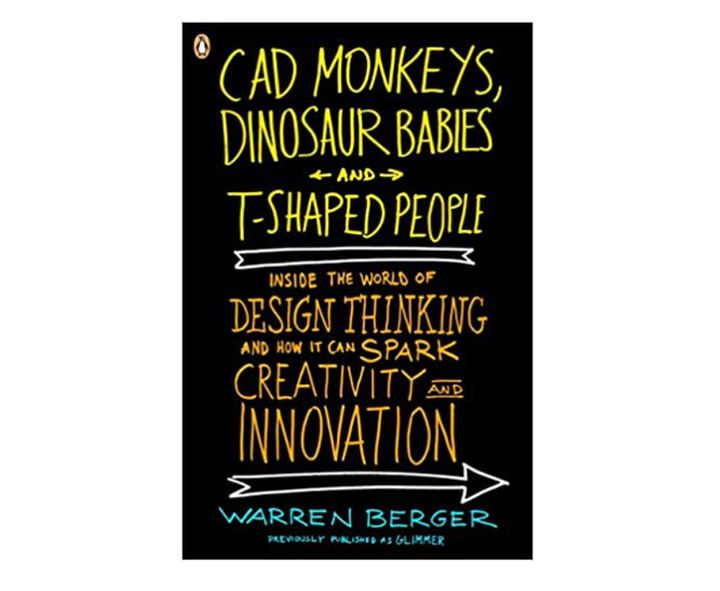
This week’s selection is “CAD Monkeys, Dinosaur Babies and T-Shaped People: Inside the World of Design Thinking and How It Can Spark Creativity and Innovation” by Warren Berger.
Most people using 3D printing require design. Design is the essence of an idea that’s represented by that digital file you push onto the 3D printer. It’s an essential element of the technology, and also the most difficult to create.
Sure, you can easily download a 3D model from somewhere, use an existing 3D model you already have or even hire someone else to do the creating. But that creation process must involve Design.
The author of this book, Warren Berger, wrote many articles on the topic of design, but finally decided to put together a book on the subject. His goal was to answer the question, “What is Design?”
In an easy to read fashion, and 352 pages, Berger does just that.
Berger begins the book with that very question, and proposes three fundamental steps that I strongly believe in.
One of them is to “ask stupid questions”. This, to me, is one of the most basic ideas about design. By asking “stupid questions” one can shed the baggage of previous design and, hopefully, get to the heart of the matter. A design is not an adaptation of a previous design; it’s something new that addresses the problem at hand.
How does a design solve that problem? What functions does it execute towards that goal? Perhaps these aren’t stupid questions after all. But the important thing is to allow a free flow of ideas and understanding about a product.
Berger also talks about “jumping fences”, where you combine different ideas to develop new solutions. This is also a key approach that I often use when concocting a new design.
The book proceeds to answer questions like, “how do we figure out what people need — before they know they need it?” Or “Can the way a company behaves be digitized?” These and other questions listed by Berger are fundamental and are key in breaking down a situation into what really needs to be done within a design.
By understanding the situation one can more easily develop a design that will actually meet the needs of the requestor. In fact, you can also eliminate parts that were actually not required in the solution, potentially simplifying the design.
While these skills would be of huge benefit when designing a solution for 3D printing, they are also extremely useful in designing, well, anything! Be it a project concept, something around the home or a complex interpersonal relationship, all can benefit from a good and proper design.
You’ll find out how to do that in this book.
Via Amazon
